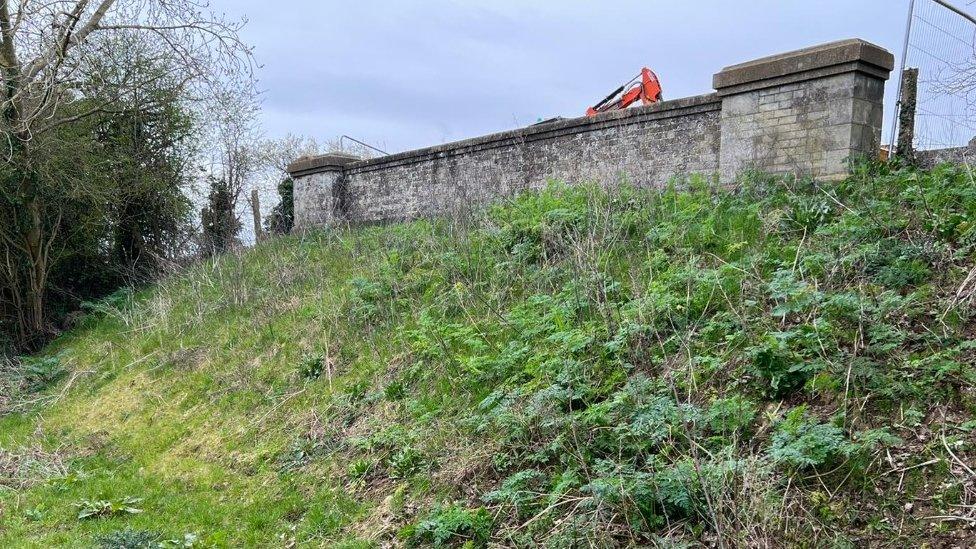Historic Congham railway bridge could be restored
- Published

National Highways has been told to remove the concrete and stones from Congham Bridge by 10 April
A historic railway bridge which was filled in with concrete could be restored.
West Norfolk Council took enforcement action against National Highways after 1,000 tons of material was poured under Congham Bridge.
The organisation 'infilled' the structure in 2021, claiming it was making it safe.
But the government-owned firm has been told to remove the concrete and stones by 10 April.
National Highways spent £127,000 putting the material in the bridge.
The move appalled heritage groups who have since been campaigning for the 1923 bridge, near King's Lynn, to be returned to its former state.
In October, West Norfolk councillors rejected an attempt by National Highways to apply for retrospective permission for the work.
The company said the work was carried out as an emergency measure to support the structure - but it later broke permitted development regulations when it failed to remove the concrete within 12 months.
Michael de Whalley, chairman of Congham Parish Council, said: "National Highways' actions were very frustrating. There are fantastic possibilities if it is reopened, but how do you maintain a bridge if it is encased in concrete?
"We want them to undo the work and maintain the bridge properly in the hope it can be used as something more constructive such as a cycleway or greenway."
National Highways has previously said it would appeal against the enforcement action but is yet to confirm it still intends to.
It has defended its actions, claiming it was "the best option" to protect the crossing.
Hélène Rossiter, head of the Historical Railways Estate at National Highways, said: "This work was essential to ensure the bridge can carry traffic safely. We do not feel the council's decision adequately reflects the safety concerns raised, which is why we are lodging an appeal with the Planning Inspectorate."
The Historical Railways Estate said it had consulted with local planning and highway authorities, which said had no objections to the plans, and carried out surveys to consider cost implications.
Congham Bridge was built in as part of the Midland and Great Northern Joint Railway network, with the route connecting South Lynn with Fakenham before continuing on to Great Yarmouth.
But after World War Two, the railways had fallen into disrepair and certain sections began to be closed. The final engines travelled along the line in 1959.

Follow East of England news on Facebook, external, Instagram, external and X, external. Got a story? Email eastofenglandnews@bbc.co.uk or WhatsApp us on 0800 169 1830